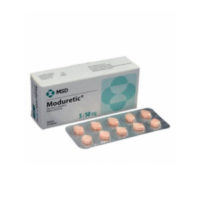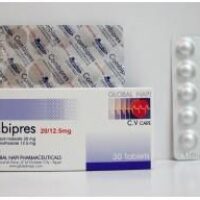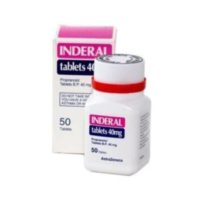Description
Drug Uses
Norvasc is indicated for treatment of hypertension (high blood pressure) and angina (chest pain). Norvasc widens (relaxes) the blood vessels, making it easier for the heart to pump and lowering its workload. This medication is in calcium channel blockers class of drugs.
How Taken
Norvasc comes as a tablet to take orally. The general dosage is a tablet a day. It is recommended to take Norvasc with a meal or a glass of milk, as it may cause an upset stomach. Do not drink grapefruit juice or eat grapefruit 1 hour before or for 2 hours after taking Norvasc. Your doctor might prescribe a low salt or low sodium diet while you are taking Norvasc. Consult your doctor before taking salt substitutes that contain potassium.
Warnings/Precautions
You may not be able to take Norvasc, or you may need a dosage adjustment or monitoring during treatment if you have any of the following– liver, kidney or heart disease, blood vessels disease, such as sick sinus syndrome, aortic stenosis, heart failure, low blood pressure, or coronary artery disease. This drug is in the FDA pregnancy category C, which means that studies in animals have revealed adverse effects on the fetus (teratogenic or embryocidal or other) and there are no controlled studies in women, or studies in women and animals are not available. Also it is not known not known if Norvasc passes into breast milk. Therefore, do not use Norvasc without your doctor`s approval if you are pregnant, likely to become pregnant or breast feeding.
Missed Dose
If you miss a dose take it as soon as you remember. If it is nearly time for the next dose, skip the Missed Dose and continue your regular dosing schedule. Do not take a double dose to make up for a missed one.
Possible Side Effects
Some of the possible serious side effects of Norvasc are– an allergic reaction (difficulty breathing, closing of your throat, swelling of your lips/tongue/face, or hives), an irregular heartbeat, shortness of breath, chest pain, severe dizziness or fainting, psychosis, jaundice (yellowing of the skin or eyes), or swelling of the legs or ankles. If you experience any of these side effects, you should stop taking Norvasc and seek medical attention immediately. Contact your doctor if you experience any of the following or other less serious side effects– headache, dizziness, nausea, diarrhea, vivid or abnormal dreams, flushing, abdominal pain, change in appetite, or increased or difficult urination.
Storage
Store this medication at room temperature 15–30°C (59–86°F). Keep away from children and excess heat and moisture (not in the bathroom).
Overdose
If overdose is suspected seek medical attention immediately. Some of the symptoms of overdose are– dizziness, weakness, chest pain, shortness of breath, fainting, unusually fast or slow heartbeat, coma, slurred speech, and confusion. Overdose of Norvasc may cause excessive peripheral vasodilatation with marked hypotension and possibly a reflex tachycardia.
More Information
Let your doctor know if you have liver, kidney or heart disease, blood vessels disease, such as sick sinus syndrome, aortic stenosis, heart failure, low blood pressure, or coronary artery disease. Patients over 65 years old may be more sensitive to the side effects of Norvasc, these patients may be prescribed a lower dose of this drug by their doctor.
Disclaimer
This is only general information, it does not cover all directions, drug integrations or precautions. You should not rely on it for any purpose, it does not contain any specific instructions for a particular patient. We disclaim all responsibility for the accuracy and reliability of this information. We`re not responsible for any damage.




Reviews
There are no reviews yet.